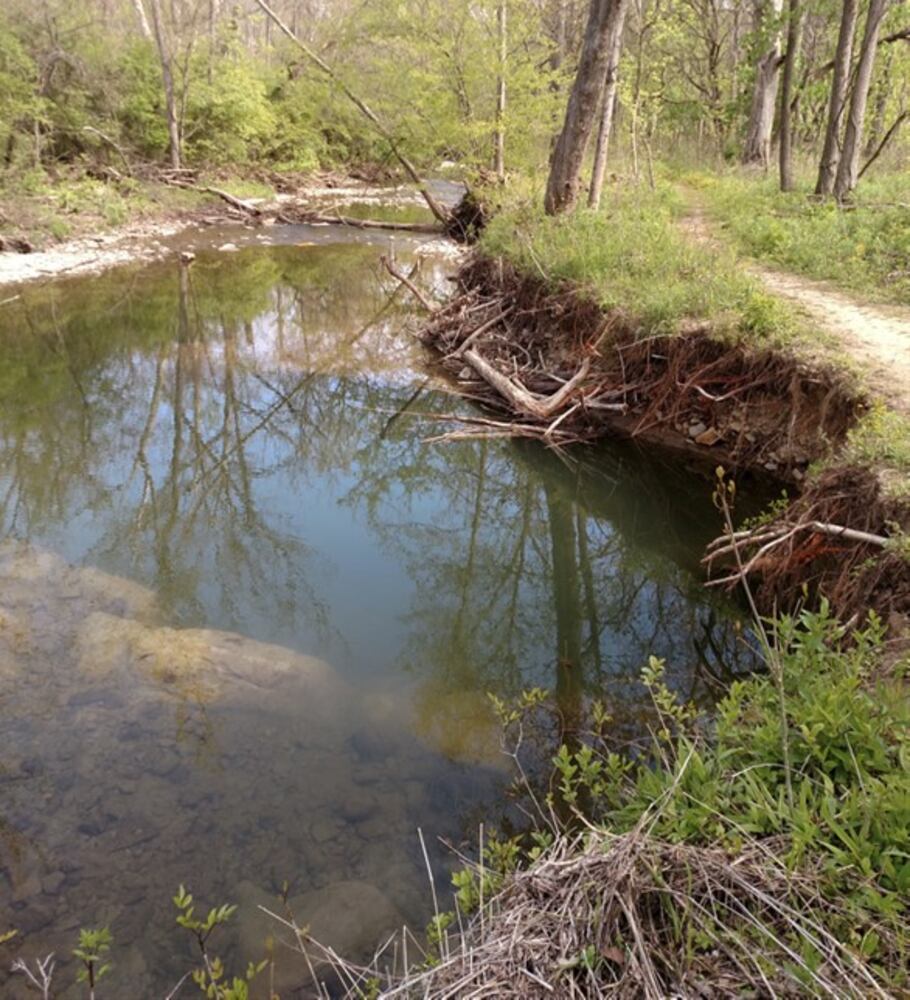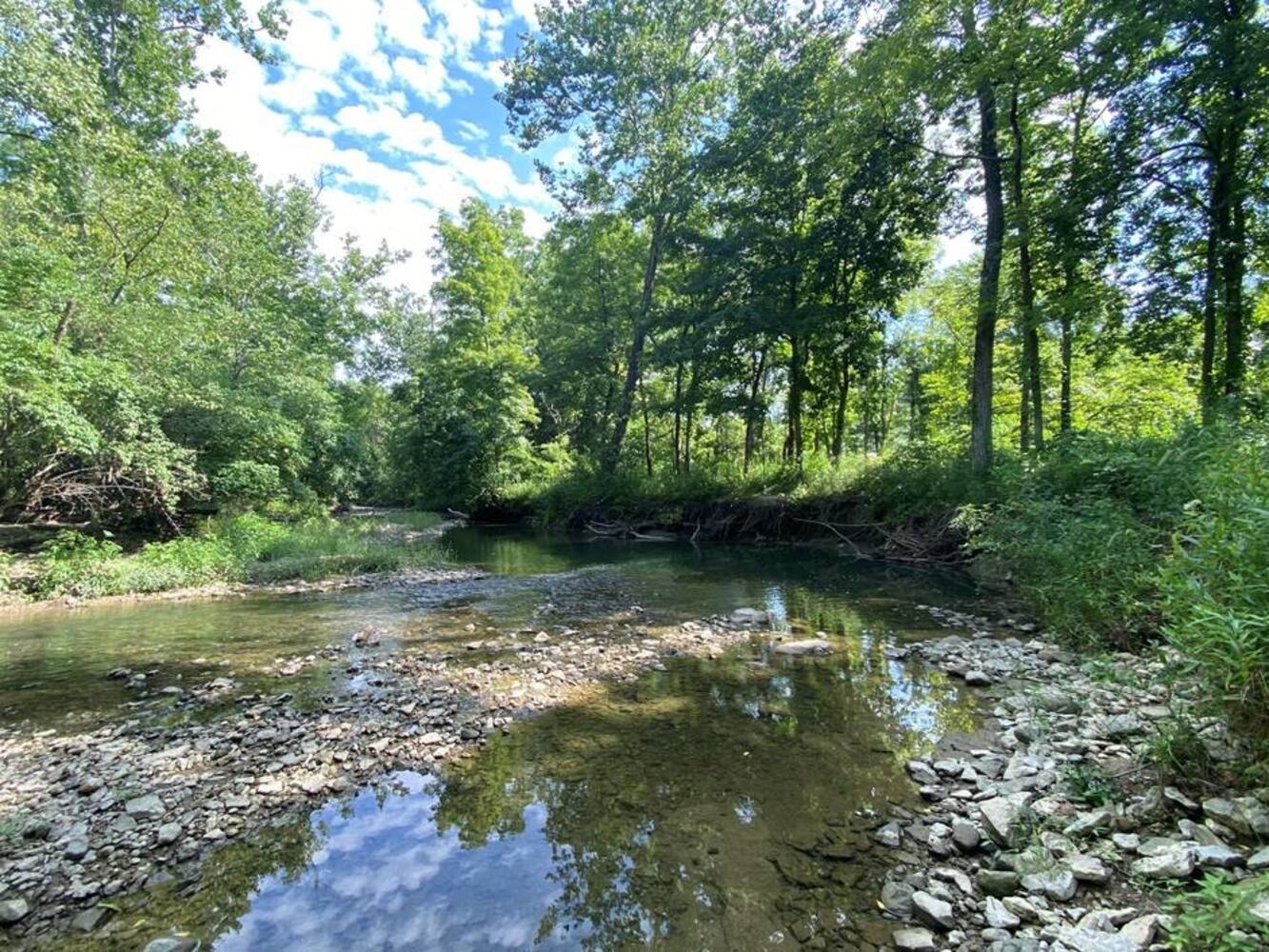The 25 projects are spread across 22 counties. Twenty-three Ohio wetlands have been created or restored under H2Ohio, and 113 projects are underway, including the latest grant announcement, according to a state news release.
Butler County
MetroParks of Butler County will get $488,938 for stabilization of the Dry Fork streambank at Governor Bebb MetroPark in Okeana. That should cover the full cost of the work, according to Katie Ely-Wood, supervisor of community and park relations for MetroParks.
Sediment from the stream’s eroding banks is degrading wildlife habitat, worsening water quality and threatening a road to the park campground, according to a May 24 news release from MetroParks. The proposed work will remove invasive plants, restore the streambank and install structures to direct water away from the soft banks and allow collection of stormwater in a new wetland, the news release says. Planning will take place this fall, with construction scheduled to run from July 2023 to December 2023.
Credit: Submitted - MetroParks of Butler County
Credit: Submitted - MetroParks of Butler County
Montgomery County
The Centerville-Washington Park District will get $309,720 for wetland creation and streambank restoration along Holes Creek in Grant Park.
The 189-acre park on the former Normandy Farms estate includes wetlands and 2 miles of the creek. At many spots its banks have destabilized due to runoff from surrounding areas and changing flow around infrastructure such as and old bridge abutment and sewer line that acts like a lowhead dam, according to Kristen Marks, park district executive director. The backup hurts water quality, retains sediment and creates a stagnant spot.
“Just upstream of the backwater, the in-stream habitat is in excellent condition, which indicates a significant opportunity for ecological lift should this section of the creek be restored with the debris removed,” Marks said.
Erosion is threatening trails too. The plan is to remove many of the structures, stabilize the streambank and realign the stream’s channel, improving flow, water quality and plant and wildlife habitat, Marks said. Adding curves and allowing the stream back into the floodplain at some spots should slow down surges of water, reducing erosion, she said. Other barriers such as water plants, trees and rocks will help further.
“In addition, we will develop stormwater wetlands to provide a creative solution to manage, slow, and clean stormwater more effectively before it enters Holes Creek,” Marks said.
The state funding should cover the full cost of the project, which needs to be complete by September 2023.
The wetland work is part of a 2020 master plan that calls for a trailhead plaza, better parking, and an accessible walking path at the park’s McEwen Road entrance. The entrance improvement will start in September.
Clark County
Tecumseh Land Trust will get $198,037 for floodplain restoration along Rainbow Run, a tributary of the Little Miami River. That should be enough to cover the expected work, said Michele Burns, executive director of the Yellow Springs-based land trust.
The group will also get $20,000 from the U.S. Fish & Wildlife Service for the project, according to ODNR. That isn’t cash, but represents the cost of assisting with design and implementation, Burns said.
The 9-acre privately-owned site is just upstream from Clifton Gorge State Nature Preserve. The landowners have removed invasive species and planted native vegetation on the site for years, according to Tecumseh Land Trust’s website. The grant will enable creation of wetland for animal habitat, more room for native plant species, and a connection to Rainbow Run which should allow stream overflow into the wetland, cutting erosion, the website says.
The funding allows two years for the work, but planners hope it won’t take that long, Burns said.
Credit: Submitted - T. Miller
Credit: Submitted - T. Miller
Once the work is finished it will be protected by a permanent conservation easement held by Tecumseh Land Trust, according to the group’s website. The land will remain privately owned, at least for the current owners’ lifetimes; but the owners are “very passionate about this,” eager to use it as a demonstration site for wetland restoration and a haven for migratory birds and pollinators, Burns said.
There are other potential wetland restoration sites in the area, all privately owned as well, Burns said. If those landowners follow suit in allowing stream and wetland work, Tecumseh Land Trust would seek conservation easements over those sites as well, she said.
“We’re hoping this is the start of something bigger here,” Burns said.
About the Author


